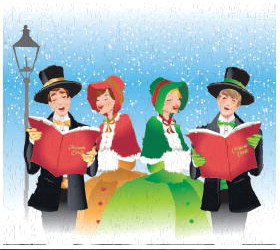Teachable Moment


the How did “A Christmas Carol” affect Christmas?
English author Charles Dickens wrote A Christmas Carol in 1843 with a message of charity and good will towards all humankind. In England Christmas was barely celebrated at the start of the 1800s, and December 25 was just a normal working day.
Before the book was published, most British businesses did not allow time off for the holiday, and most of England was so extremely poor and overworked that there was little merrymaking. Child labor and workhouses for the poor with brutal conditions were common.
When Charles Dickens was 12 years old, he had to leave school and work in a dirty, rat-infested factory because his family got into financial trouble. As an adult, Dickens became a proponent of the need for charity for the children of the slums, using the characters Tiny Tim and Want and Ignorance to arouse sympathy with readers. Dickens used his book to bring attention to the problems faced by those living in poverty and to give new meaning about Christian charity and kindness to the Christmas season. In A Christmas Carol
Charles Dickens envisioned an English Christmas with white snow, candlelight, fireplaces, Christmas trees, mistletoe and holly, Christmas carols, nativity scenes, dancing, gathering with family and friends, gift giving, playing games, Christmas cards, plenty of food with turkey, wonderful smells, and time off from work to celebrate the holiday. A Christmas Carol was so popular that it became a Christmas sensation in Victorian England. From Dickens’ fiction, the British people developed many of the holiday traditions now celebrated from Thanksgiving through New Years’.





